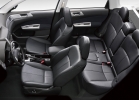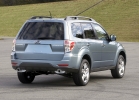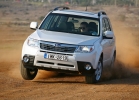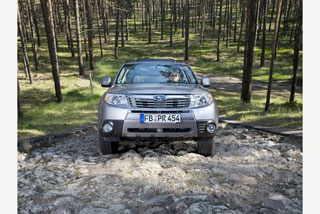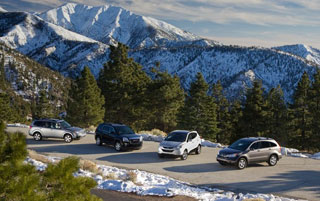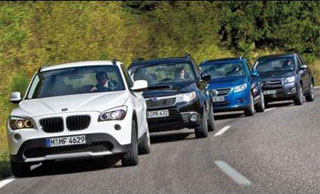Subaru Forester test drive since 2008 SUV
The owner of the taiga
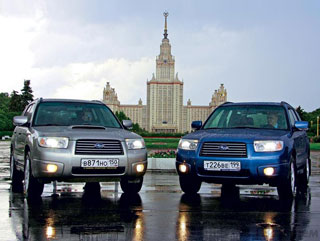 Everyone represents off-road differently: for someone it is a desert with huge boulders, for someone a dirty countryside behind the outskirts. In Subaru, they managed to build a station wagon of increased cross -country ability, who met a warm welcome in different parts of the world, in different countries, including in Russia. What is the secret of success, Pavel Leonov found out. Photo: Konstantin Yakubov.
Everyone represents off-road differently: for someone it is a desert with huge boulders, for someone a dirty countryside behind the outskirts. In Subaru, they managed to build a station wagon of increased cross -country ability, who met a warm welcome in different parts of the world, in different countries, including in Russia. What is the secret of success, Pavel Leonov found out. Photo: Konstantin Yakubov. The premiere of the second -generation of the second -generation (SG body, model S11) was very popular today in 2002 at the Detroit car dealership. He replaced the S10 model (first generation, SF body) and was produced until the successor appeared in 2008. The second forester (namely, the name of the car is translated) did not undergo the same recognizable silhouette, opposition engines, a symmetrical all -wheel drive and an impressive list of equipment.
United Europe
Machines intended for European and Russian markets are traditionally no different. Initially, only cars with two opposite 4-cylinder 16-valve engines were officially supplied to us with two-liter capacity of 125 and 177 hp. Since 2004, they added a 2.5-liter capacity of 210 hp to them. The weakest atmospheric, two others with turbocharged. After the restyling of 2005, only two engines were preserved. Their power raised to 158 hp. In the usual version and up to 230 hp. In the Turbo version. They achieved this thanks to the AVCS gas distribution phase system (Active Valve Control System) and DONS dioxide dysfunctions.
Forester engines aggregated both with 5-speed mechanics and with a 4-speed automatic. Exclusion is the most powerful version of 2.5 CT turbo. At first, it was equipped only with a mechanical box, and in 2005 a version appeared with a machine gun.
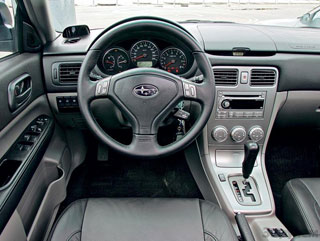 All Foresters have a permanent all -wheel drive with a self -locking center differential. On machines with mechanics, the thrust is distributed in a ratio of 50/50, on versions with an automaton to the front axis, 60%is already transmitted. The weakest 2.0-liter was equipped with a demultiplier with a gear ratio of 1.45, which significantly facilitated life on impassability. But the option was distributed only to cars with a manual box.
All Foresters have a permanent all -wheel drive with a self -locking center differential. On machines with mechanics, the thrust is distributed in a ratio of 50/50, on versions with an automaton to the front axis, 60%is already transmitted. The weakest 2.0-liter was equipped with a demultiplier with a gear ratio of 1.45, which significantly facilitated life on impassability. But the option was distributed only to cars with a manual box. At post -taging machines, the front part, optics, added plastic thresholds, etc. were changed. The filling also underwent changes, the system for maintaining the constant road clearance of Self-Levelizer and Nill Holder, which helps to move in the hill, appeared. Then they introduced a new 4-speed Sportshift machine with manual switching. They began to install wheels with a 70 percent profile (instead of the previous 60) and changed the suspension settings.
Separately, we note the additions in the list of standard equipment. Foremen of the first years of release had in the ABS base, 4 airbags, a central lock, immobilizer, electric windows and heated mirrors, religions, alloy wheels R16. Versions of turbo plus everything had heated front seats and windshield in the rest zone of wiper chips, as well as climate control, cruise control and fog lights, which after the update became the norm for all foresters, as well as a CD resort, headlight washers, 2 Din Magns and fog lights. In the Turbo version, xenon, alloy wheels R17 and the VDC stabilization system (Vehicle Dynamics Control) were added on machines with automatic machine. A leather salon, electric lover, high -quality audio system, navigation, and the steering wheel of MOMO were also offered as options. It’s not to list in total, because there were 7 configurations before restyling, and after 17.
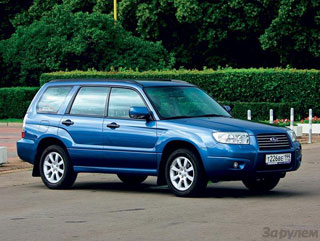 The same from the face
The same from the face In the American market, forever began to sell in the same 2002. Initially, only two levels of equipment X (the simplest unpainted bumpers, rear drum brakes, etc.) and XS (extended basic equipment plus the option) with a single atmospheric engine 2.5 liters (165 hp) were offered. Then, since 2004, several modifications were added annually. First, HT was presented with an engine of the same volume, but already with a turbocharged, which issued 210 hp. The next year, XS L.L.Bean appeared (most options already in the base), in 2006 (after restyling) X L.L.Bean Edition (even more sophisticated than XS L.L.Bean), and finally, XT Limited (the most complete). For 2007, Sport 2.5 X (atmospheric engine 2.5 l with a capacity of 173 hp), Sport 2.5 XT (2.5 liter engine with turbocharged, with a capacity of 224 hp) and 2.5 x W/Premium Package.
The engines of all cars were aggregated both with a 5-speed manual box and with a 4-speed automatic. The exclusion of the modification of L.L.Bean (both XS and X Edition) only with automatic transmission.
In general, the level of equipment of different configurations was not very noticeable: somewhere minor options for heating the seats, a leather braid of the steering wheel, somewhere improved audio system with an amplifier or a leather interior and hatch, were added.
The local cars are distinguished by optics (the shape of the light beam and additional reflective elements), the bumpers (stamping for square numbers) and digitizing instruments in miles and pharykhaneites are distinguished. If you want a traditional European dimension, look for copies for the Canada market.
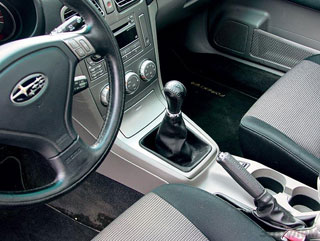 NARROW SPECIALIZATION
NARROW SPECIALIZATION Foresters in the domestic market of Japan, in fact, are also no different from their brothers in other parts of the world, except, of course, the location of the steering wheel and a much richer and diverse list of equipment. Many local cars on cars for other countries simply will not meet. For example, a sports plastic body kit, 18-inch wheels, MD player, etc.
In total, there are more than 10 options for the execution of foresters, but the most common 2.0 (X, XS, XT, X20), CROSS Sports and L.L. are of the greatest interest. Bean Edition is the top of comfort and equipment. Versions X vary in internal and external design, and Cross Sports is distinguished by a different philosophy. Here, they did not limit themselves to sports pedals and the steering wheel is flaunted by a sports body kit, reduced to 170 mm clearance (on all the rest of 195 mm), changed suspension settings, etc. We also accept the loaded modification of STI with us. There is something for 18-inch alloy wheels of original design, disc brakes in a circle (front ventilated), sports interior, 6-speed manual gearbox and 265 (!) L.S. Under the hood.
Good in their own way
Thanks to their consumer qualities, the foresters fell to the courtyard for many, which means that there is something to choose from in the secondary market. Europeans here today a little euro and customs rates make them not very competitive. Others have their own pros and cons. The Russians are attracted to a transparent story, but went to their native spaces and on our gasoline. Americans are cheaper than the rest, but well -groomed. The hosts often forget to change the oil, and the high -tech foreman engines do not tolerate this. The Japanese are good for everyone except the location of the steering wheel, which, no matter how you look, is a doubt pleasure.
The editors thanks the Moscow Forester Club (www. Forester-moscowclub.ru) for help in organizing the filming.
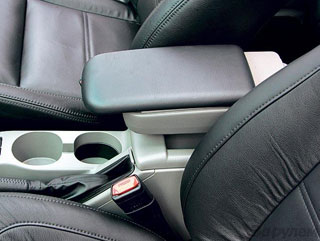


A source: The magazine "Driving"
Video Subaru Forester test drive since 2008
Subaru Forester Crash Video since 2008
Subaru Forester test drive since 2008
Subaru Forester Crash Test since 2008
Krassh Test: Detailed Information91%
Driver and passengers
73%
Pedestrians
91%
Children-passengers
86%
Active security system


